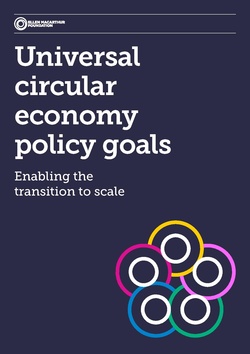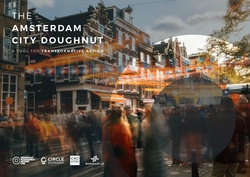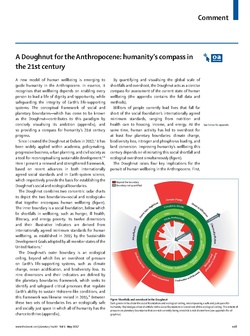Wellbeing
| Wellbeing | |
|---|---|
 Wellbeing | |
| Team Members | [[Has team members::  ]] ]]
|
| Blueprint | Wellbeing |
The objective of the Wellbeing team is to bring together governments, commercial partners, university researchers and NGOs to remove the technical barriers to broad deployment of socially beneficial services. For an understanding of the outcomes we are striving to achieve see the work of the Ellen MacArthur Foundation exploring the circular economy and Kate Raworth balancing essential human needs and planetary boundaries.
Chair(s)
-
[[File:|thumb|x{{{siStan Curtis SVP Business Developmente}}}px|link=Stan Curtis SVP Business Development|Stan Curtis SVP Business Development
at
]] - [[File:|thumb|x{{{siChair Wellbeinge}}}px|link=Chair Wellbeing|Chair Wellbeing
at
]]
Activities

|
Breaking the Code The UN-hackathon | |
| Multnomah County, Oregon is partnering with Technology Association of Oregon (TAO) and other local groups to host a community collaborative problem solving event and an ongoing, community-based technology incubator called Breaking the Code.
We aim to break some of the barriers that exist among organizations that specifically serve people of color and the broad, local tech community. Partnering together gives us a platform to bridge the gap between the two and provide opportunities for Community Based Organizations (CBO’s) to become more efficient and effective in their targeted service delivery. A longer term goal is the creation of community-based and community-led technology start-ups. Breaking the Code’s framework leverages assets from the public sector (data, staff, technology platforms, public infrastructure, small business incubation, etc.), and the technology industry (technology solutions, expertise, professionals, funding, etc.) with the goal of making CBOs more successful serving their community. This, in turn, fulfils the promise of smart cities as “thriving communities” with well being across the life span, equity and access, sustainability, resiliency, and vibrant arts and culture. | ||

|
CIVIC school HUBS | |
| NSF CIVIC grant to incubate the Federal School Infrastructure Toolkit for more resilience Community services. A pilot program with be developed with the BENSON school district in Portland, and woven into the urban/rural network of the Metro regional emergency response. | ||

|
COVID Calculator | |
| The COVID Calculator determines whether you’ll quarantine or isolate, and for how long. | ||

|
Complete Neighborhoods — Building a Healthy Connected City | |
| The goal of the Healthy Connected Neighbourhood Strategy is to bring complete neighbourhoods to 80% of the city’s population by 2035. The Strategy is integrated into the main Portland Plan, a comprehensive strategic plan to achieve urban equity and sustainability. | ||

|
DigiTel Resident Card | |
| The City of Tel Aviv has undergone a transformation to become a “smart city” that uses technology to improve the City Hall administration and its citizens’ lives. Through programs such as the DigiTel Residents Club and the DigiTel mobile application, Tel Aviv offers innovative electronic services to its population and is searching ways to make citizens interested in how the city works. Throughout the process, Tel Aviv has worked closely with Microsoft to find the best ways to achieve its vision of a smart city. | ||

|
Dwellingly | |
| Dwelling.ly is an app to improve communication between the landlord providing transitional housing and the social workers who support them. | ||

|
Family CARE - Caregiver 2.0 | |
| Presence Caregiver learns daily activity patterns and can warn caregivers, family members and friends about incidents of concern with text alerts of potential hazards including falls, water leaks and wandering. | ||

|
Fast Wi-Fi boost for Copr Bay | |
| Fast and reliable Wi-Fi technology is being introduced in Swansea's emerging new Copr Bay district, letting thousands of people stream content at the same time to their mobile devices. | ||

|
Global Organization of Smart Cities GO SMART | |
* Currently many cities in the world are facing similar challenges and have therefore developed their own Smart City strategy and are running their own Smart City projects. Considering the similarity of the challenges, there lies huge potential in effective knowledge exchange and collaboration.
| ||

|
Green Horizons: Urban Workforce Development and Electrification Center | |
| The Green Horizons Workforce Development and Vehicle Electrification Center is pursuing a
planning grant that aims to establish a positive sustainable economic impact for the Multnomah County Drainage District community. This project will produce an assessment plan for a combined workforce training and commercial grade EV fleet conversion facility. | ||

|
Hello Lamp Post UBC Campus | |
| Initially launched as a pilot project, Hello UBC was designed to innovatively engage students and staff on campus, to support the parking and access services team. Their goal was to communicate key messages and gain insights into the behaviours of commuters and visitors around campus. | ||

|
Kashiwanoha Smart City Project | |
| The Kashiwanoha smart city project (first described as Kashiwanoha International Campus Town Initiative) is a planned from scratch city project, involving a greenfield smart city vision, situated around Kashiwanoha Campus Station. Kashiwonoha smart city project is a privately-led project, with Mitsui Fudosan as the main developer. It was also the owner the previous owner of the golf course on which construction work of the project were first based. However, Kashiwa city was designated as one of the "FutureCities" by the national government in 2011, making Kashiwanoha new town project eligible for government subsidies. | ||

|
My Digital Data Locker Baltimore | |
| For those staying in a shelter or shuttling between other people’s homes, keeping track of these vital documents can be near impossible. They also can be lost, destroyed or stolen.
Recognizing that this was blocking some people from securing stable housing, the city of Baltimore this year launched an innovative program — My Digital Data Locker — to help people store and keep track of key documents. | ||

|
OMSI Development | |
| The OMSI Consortium is soliciting subject matter experts and qualified vendors to participate in a series of short virtual workshops during the months of October-December 2020, culminating in a Q1 2021 Request for Proposal (RFP) to build a showcase integrated district infrastructure solution to serve the Oregon Museum of Science and Industry’s 23-acre site with the potential to develop up to 3 million square feet of new, low-carbon, mixed-use construction in Portland’s Central City Plan District. Workshop details will be released to confirmed participants. | ||

|
Oregon Digital Safety Net | |
| Digital communications are necessary to participate in mainstream life today.
Those of us who are fortunate enough to be employed, housed, and reasonably healthy and stable, financially and emotionally, know how dependent we are on our digital devices to navigate our daily lives. | ||

|
Regenerative Urbanism Vanport | |
| Vanport, Oregon was a temporary housing project built in 1942 to address a wartime housing shortage in Portland. | ||

|
Resilience HUB - East Multnomah | |
| Resilience Hubs are community-serving facilities augmented to support residents and coordinate resource distribution and services before, during, or after a natural hazard event. They leverage established, trusted, and community-managed facilities that are used year-round as neighborhood centers for community-building activities. Resilience Hubs can equitably enhance community resilience while reducing greenhouse gas emissions and improving local quality of life for our communities. They have the potential to reduce burden on local emergency response teams, improve access to public health initiatives, increase the effectiveness of community-centered institutions and programs. | ||

|
Resilience HUB - NIST Guide | |
| Natural, technological, and human-caused hazards take a high toll on communities, but the costs in lives, livelihoods and quality of life can be reduced by better managing disaster risks. Planning and implementing prioritized measures can strengthen resilience and improve a community's abilities to continue or restore vital services in a more timely way, and to build back better after damaging events. That makes them better prepared for future events and more attractive to businesses and residents alike. | ||

|
Resilience HUB - Vibrant Hawaii | |
| A goal of the Resilience Hub initiative is to build individual capacity and community networks to be resilient and ready for anything. To get there, Vibrant Hawai'i hosted a Resilience Leadership Academy (RLA) - a monthly development program with curated content by local experts. | ||

|
Rose City Resource | |
| The Street Roots Rose City Resource (RCR) is a 4’x 4′, 104 page guide that is the most comprehensive, updated list of services for people experiencing homelessness and poverty in Multnomah, Washington and Clackamas counties. | ||

|
School Organized Locally Assisted Community Emergency‐Management | |
| The School Organized Locally Assisted Community Emergency‐Management (SOLACE) project focused on the use of a community school as a community resilience hub for its surrounding community. Community Resilience Hubs (CRHs) can be defined as community‐serving facilities augmented to support residents and coordinate resource distribution of resources and services to the surrounding community. This project focused specifically on the use of a CRM to support community member needs before, during, or after a natural hazard event and on developing a community‐led sociotechnical infrastructure framework for adapting a public school (Buckman Elementary School) as the pilot CRH. In 2022, this project received a NSF Planning Grant. | ||

|
Small Donor Elections | |
| The Small Donor Elections program seeks to reduce the influence of money in politics and encourage election of people to City office who are reflective of and accountable to all Portlanders. | ||

|
Southport development | |
| Southport is the only full-building solution available in the Greater Puget Sound area. As you enter Southport on Lake Washington you will quickly realize you are in a unique place. The entire campus has been designed with a focus on a lifestyle environment that supports the development of great teams. | ||

|
State of Place City of Tigard | |
| Prior to using State of Place, Tigard did not know where to begin in their data-driven walkability plan for their Tigard Triangle project. The process was cumbersome and error-prone. The City needed a tool that could conduct objective, robust assessments of existing walkability of the Tigard Triangle, and offer impactful recommendations to increase public approval. | ||

|
World Smart Sustainable Cities Organization WeGO | |
| The World Smart Sustainable Cities Organization (WeGO), established by 50 founding member cities in 2010, is an international association of city and other local governments, smart tech solution providers, and national and regional institutions committed to the transformation of cities into smart sustainable cities.
A diverse range of activities include capacity building programs, sessions and smart city conferences and study visits, feasibility studies and pilot projects, expos and exhibitions, smart city guidelines and best practice catalogs. | ||
Webinars

|
Accessible Transportation | |
| Accessible Transportation Technologies Research Initiative (ATTRI) a division of the USDOT seeks to remove barriers to transportation by leveraging advanced technology to enable people to travel independently anytime of the day to any destination, regardless of their individual abilities | ||

|
Built For Zero | |
| Built for Zero is a national movement whose methodology and support network assists communities in their journey to end homelessness. Collaboration and testing of ideas to improve outcomes are at the heart of the Built for Zero continuous improvement approach that has proven itself in communities across the United States and Canada. | ||
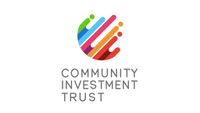
|
Community Investment Trust | |
| The Community Investment Trust is a first-of-its-kind financial inclusion tool created to empower residents and strengthen communities. The CIT is designed to remove barriers to financial inclusion and provide a low-dollar investment opportunity in a commercial property to local residents. | ||

|
How By-Name Data Helps Communities End Homelessness | |
| The by-name list is a real-time, person-specific list of everyone experiencing homelessness. The by-name list provides communities with a full and real-time view of homelessness in their geography. Using this data, we will be able to triage individual cases, understand the broader patterns of homelessness in their community, and ensure that resources and efforts are driving down the overall number of people experiencing homelessness. | ||

|
Inventing the Platform and Path to Sustainability Success | |
| Regenerative urbanism creates a balance where buildings, their occupants and the surrounding systems, both natural and man-made, work together to create resources rather than deplete them. Research shows that the integration of regenerative elements can yield greater returns over time. This approach uses dynamic governance systems to monitor and share the costs and benefits of urban life. It allows for multiple objectives to be achieved, from managing water and reusing waste biproducts to optimizing renewable resources across compact communities in new ways. | ||
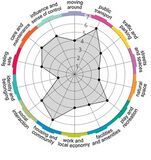
|
Place Standard | |
| The Place Standard tool provides a simple framework to structure conversations about place. It allows you to think about the physical elements of a place (for example its buildings, spaces, and transport links) as well as the social aspects (for example whether people feel they have a say in decision making). | ||

|
The Library of Things at Clackamas County Libraries | |
| Eight Clackamas County public libraries have opened a "LIbrary of Things". Learn more about a "Library of Things and the eight Clackamas County Libraries that have opened one. | ||

|
[[Active Street]] | |
| The vision to connect the end of the TriMet MAX line in Hillsboro to the Banks-Vernonia State Trail… has been a part of city and regional plans for many years. The section of this trail that runs along an old rail line between Hillsboro and Forrest grove offers some exciting opportunities for this Active Street™ concept. | ||

|
[[Beaverton Electric Bus Pilot]] | |
| TriMet purchased five electric buses thanks to a federal grant and support from Portland General Electric. These buses will operate on 62-Murray Blvd in Beaverton. | ||

|
[[Beverly Public Schools Electric Busses]] | |
| Beverly Public Schools in Massachusetts has implemented a project utilizing their electric school buses as on-demand power plants. By using bidirectional chargers, the buses' large batteries can both charge and send energy back to the grid, providing backup power during high-demand periods. | ||

|
[[Boring Company Las Vegas Convention Center Loop]] | |
| The LVCC Loop system — a three-station transportation system consisting of 1.7 miles of tunnel — was built in approximately one year (using the now-legacy Godot Tunnel Boring Machine). LVCC Loop's cost was approximately $47M (firm fixed pricing) for the two tunnels and three stations (two surface and one subsurface). Tunneling occurred during large conventions (>100,000 attendees pre-COVID) with zero road closures and zero attendee disturbances. | ||

|
[[Cajon Valley Union School District Electric Bus System]] | |
| San Diego Gas & Electric Cajon Valley Union School District Electric Bus System tests the technology that enables eight electric school buses to put electricity back on the grid when needed such as on hot summer days. A collaborative effort between SDG&E, the Cajon Valley Union School District and locally based technology company Nuvve, this is the first vehicle-to-grid (V2G) project to become operational in Southern California, helping to advance clean air and climate goals while also bolstering grid reliability. | ||

|
[[City of Boston GoHubs]] | |
| A majority of our residents rely upon public transit, biking, walking, and driving to get around our city. But, shared mobility and technology advances are altering travel. New ways of transportation are introduced each day. The future of transportation may very well be shared, electric, and highly mobile. GoHubs! are intended to help us organize these modes. We provide information on how to access them and navigate the technology, and ultimately make it easier to get around Boston | ||

|
[[Connected Vehicle Pilot Security Management Operating Concept]] | |
| Development of a Security Management Operating Concept (SMOC) for phase I of the Tampa Hillsborough Expressway Authority (THEA) Connected Vehicle (CV) Pilot Deployment Program. This focuses on how the THEA team developed an approach to the SMOC (i.e., Prepare); categorized information flows and systems (i.e., Categorize); and selected security controls to establish draft, minimum security control baselines (i.e., Select). The resulting SMOC is largely based on the NIST RMF and provides guidance for ensuring “the privacy of pilot participants and the overall security of the Vehicle-to-Everything (V2X) system for the THEA CV Pilot.” | ||

|
[[Eastside Crescent Transportation Alliance]] | |
| The Eastside Crescent Transportation Alliance provides a governance structure for a transportation management Alliance. The Alliance lines coordinates public funding for projects like I405, Sound Transit, curved space, and traffic light coordination. It would provide the employer connection to those efforts in the Bothell geographic area from its life sciences community to SeaTac airport. | ||

|
[[EcoMotion: Electrifying Washington Park's Circulator for a Greener Future]] | |
| This project converts five existing Ford transit buses to electric power. This conversion not
only reduces cost over buying new it ensures the gasoline engine is removed from the road and recycled instead of being sold for another use. It also retains the chassis and other equipment saving emissions over a new purchase. | ||

|
[[Electric Bus Deployments in Santiago de Chile]] | |
| An electric bus implementation program in Santiago, Chile, inspired by the buses in Bogotá, Colombia, began in 2014 through a partnership between the Chilean Ministry of Transport and two privately held companies, Enel X and BYD, an Italian electric company and a Chinese bus making manufacturer, respectively. | ||

|
[[Electric Island]] | |
| Electric Island is located across the street from DTNA headquarters, less than one mile from I-5, and represents the first location specifically designed for medium- and heavy-duty trucks aligned to the blueprint of the West Coast Clean Transit Corridor Initiative (WCCTCI). WCCTCI’s collaboration between nine electric utilities and two government agencies yielded a strategic plan in 2020 to electrify 1,300 miles of I-5 across the three West Coast states to provide publicly available charging for freight and delivery trucks. | ||

|
[[Electric Mobility Hub Demonstration]] | |
| An inviting & equitable community space that showcases electric mobility, integrates the street to the neighborhood, and serves as a model for future hubs. | ||

|
[[Electric Mobility Lab]] | |
| The EMS the Phase 0 Launch for the electric mobility initiative at Marine Corp Air Station Miramar. It included dynamic presentations from key government leaders on changing policies and plans, interactive panels with electric mobility thought leaders, as well as immersive demonstrations and discussions of technologies with industry-leading organizations. | ||

|
[[KPIs to Measure Urban Performance of 15 Min City]] | |
| KPIs to Measure Urban Performance of 15 Min City | ||

|
[[KPIs to Measure Urban Performance to measure the performance of 15 Min City]] | |
| 6 KPIs to Measure Urban Performance of 15 Min City. | ||

|
[[Kashiwanoha Smart City Project]] | |
| The Kashiwanoha smart city project (first described as Kashiwanoha International Campus Town Initiative) is a planned from scratch city project, involving a greenfield smart city vision, situated around Kashiwanoha Campus Station. Kashiwonoha smart city project is a privately-led project, with Mitsui Fudosan as the main developer. It was also the owner the previous owner of the golf course on which construction work of the project were first based. However, Kashiwa city was designated as one of the "FutureCities" by the national government in 2011, making Kashiwanoha new town project eligible for government subsidies. | ||

|
[[Minneapolis Mobility Hubs]] | |
| In 2019, the City of Minneapolis launched a mobility hub pilot program to increase access to convenient, low or no carbon transportation options, including transit, shared scooters and Nice Ride bicycles. | ||

|
[[Move PGH]] | |
| Move PGH unites diverse mobility services and created to provide Pittsburghers with more choices to get everywhere you need and want to go. Think of it as your one-stop-shop for all your transportation needs in the City of Pittsburgh. In coordination with the Department of Mobility and Infrastructure (DOMI) and powered by a group of the city's premiere mobility operators dubbed the Pittsburgh Mobility Collective, Move PGH will create a streamlined and accessible experience for car-free urban mobility. | ||

|
[[Multi-modal Trip Planner]] | |
| Develop a tool enables commuters to plan trips encompassing public transit, ride-sharing services, bike rentals, and pedestrian routes. By integrating multiple modes of transportation, this enhanced trip planner aims to make commuting more seamless and convenient, empowering individuals to choose sustainable alternatives to private vehicles. | ||

|
[[Portland Electric Avenue]] | |
| Electric Avenue officially opened at the World Trade Center Portland in 2016 and is located on the Northside of Southwest Salmon Street in downtown Portland. It offers street access charging stations to allow visitors to charge their personal electric vehicles while visiting the World Trade Center and neighboring offices. | ||

|
[[Southport development]] | |
| Southport is the only full-building solution available in the Greater Puget Sound area. As you enter Southport on Lake Washington you will quickly realize you are in a unique place. The entire campus has been designed with a focus on a lifestyle environment that supports the development of great teams. | ||

|
[[Urban Platform]] | |
| An easy-to-use platform that allows you to manage your city, whether you are responsible for traffic and mobility, safety, infrastructure or high-level decision making. | ||

|
[[V2G Electric School Bus Commercialization Project]] | |
| Project is addressing VTO’s core objective of reducing the cost of PEVs, and VTO’s specific Electrification R&D objective of understanding the potential impacts of EV charging on the nation’s electric grid – in both cases through pioneering V2G technology in heavy-duty vehicles | ||

|
[[West Coast Clean Transit Corridor]] | |
| The West Coast Clean Transit Corridor Initiative is an ongoing, collaborative effort among 16 utilities to support the development of electric vehicle charging facilities along I-5, from San Diego to British Columbia, for heavy- and medium-duty freight haulers and delivery trucks. | ||
